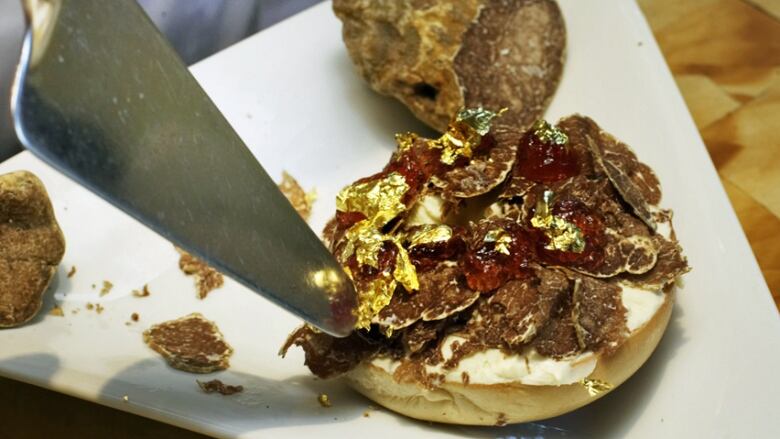5-second rule for dropped food put to the test
Time, food and floor surface all matter when applying 5-second rule for food
The five-second rule that food that falls on the floor and stays there for five seconds or less is fine to gobble is more nuanced, Canadian microbiology experts say.
People have eaten food thats fallen to the ground for centuries. Fears it can sicken you move germaphobes to pitch the morsel in the trash while others wipe it off and chow down.

Biology students in Birmingham, U.K., checked into the rule by monitoring the transfer of two common types of bacteria, E. coli and Staphylococcus aureus, onto a variety of floor surfaces.
They tested four foods:
- Toast.
- Pasta.
- Biscuit.
- A sticky sweet.
As expected, food picked up in a few seconds was less likely to be coated in bacteria than the longest time tested, 30 seconds.
"It was done by students, it hasn't been peer reviewed. It wasn't done under very controlled conditions," cautioned Jennifer Gardy, senior scientist at the B.C. Centre for Disease Control in Vancouver.
"It's kind of equivalent to going to the science fair, seeing a papier mch volcano, baking soda and vinegar spewing out of it and using that to draw conclusions about when Mt. St. Helen's is going to erupt next."

Nonetheless, Gardy said it makes sense intuitively that when theres more bacteria on the floor, more is likely to get on a sticky, wet surface like cream cheese on toast versus dry toast with no toppings.
Type of surface matters
The type of flooring also matters, said Toronto microbiologist Jason Tetro. For tightly woven carpet, bacteria can get caught up in the fabric.
On the other hand, if a dry bagel is dropped in a place thats likely to be germy, such as a kitchen sink used to handle raw food, "you definitely dont want to be touching it," Tetro advised.
If the same dry bagel is dropped on your clean countertop then you should be able to pick it up and eat it, assuming you arent immuncompromised, Gardy and Tetro said.
In a public place, where the cleanliness of the surface is questionable, Tetro would throw out the food regardless of how quickly you scoop it up or the type of food.
"Youre in a place you dont know," Tetro said. "Its a hard surface, so you know whatever bacteria is there is going to get on the bagel. Even though restaurants clean their tables, we know from microbiology, that the bacteria stays in that dishcloth and then just gets spread around."
A proposed revision to the rule: The quicker the better, depending on what you drop and where you drop it.
With files from CBC's Kim Brunhuber













_(720p).jpg)


 OFFICIAL HD MUSIC VIDEO.jpg)
.jpg)



























































































